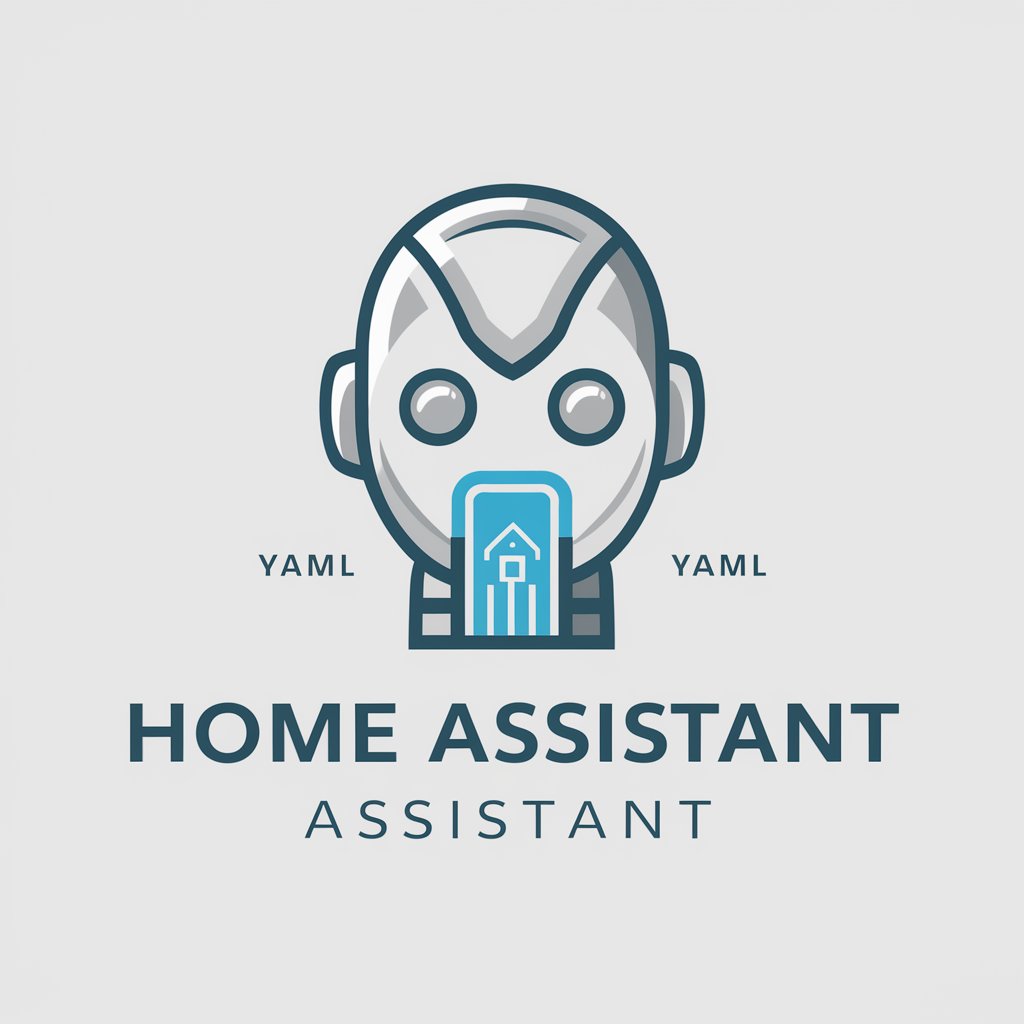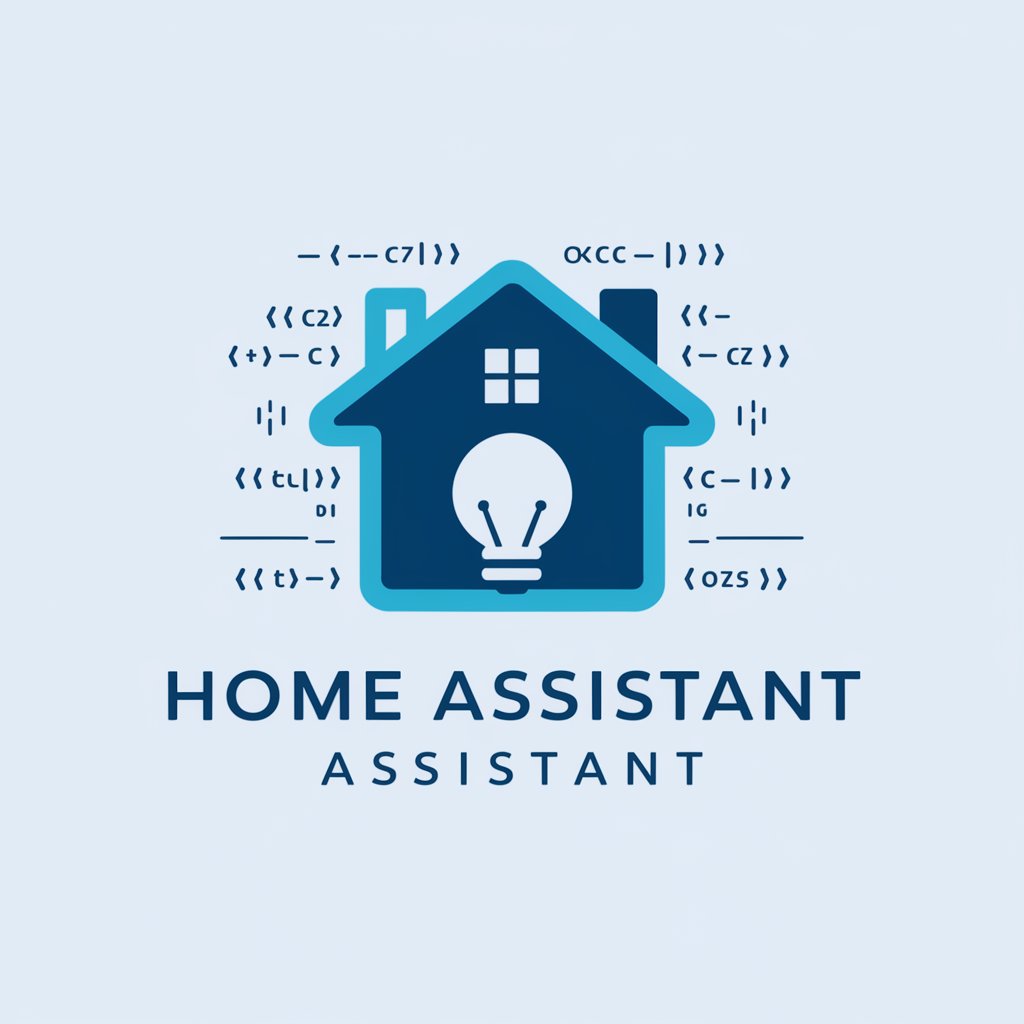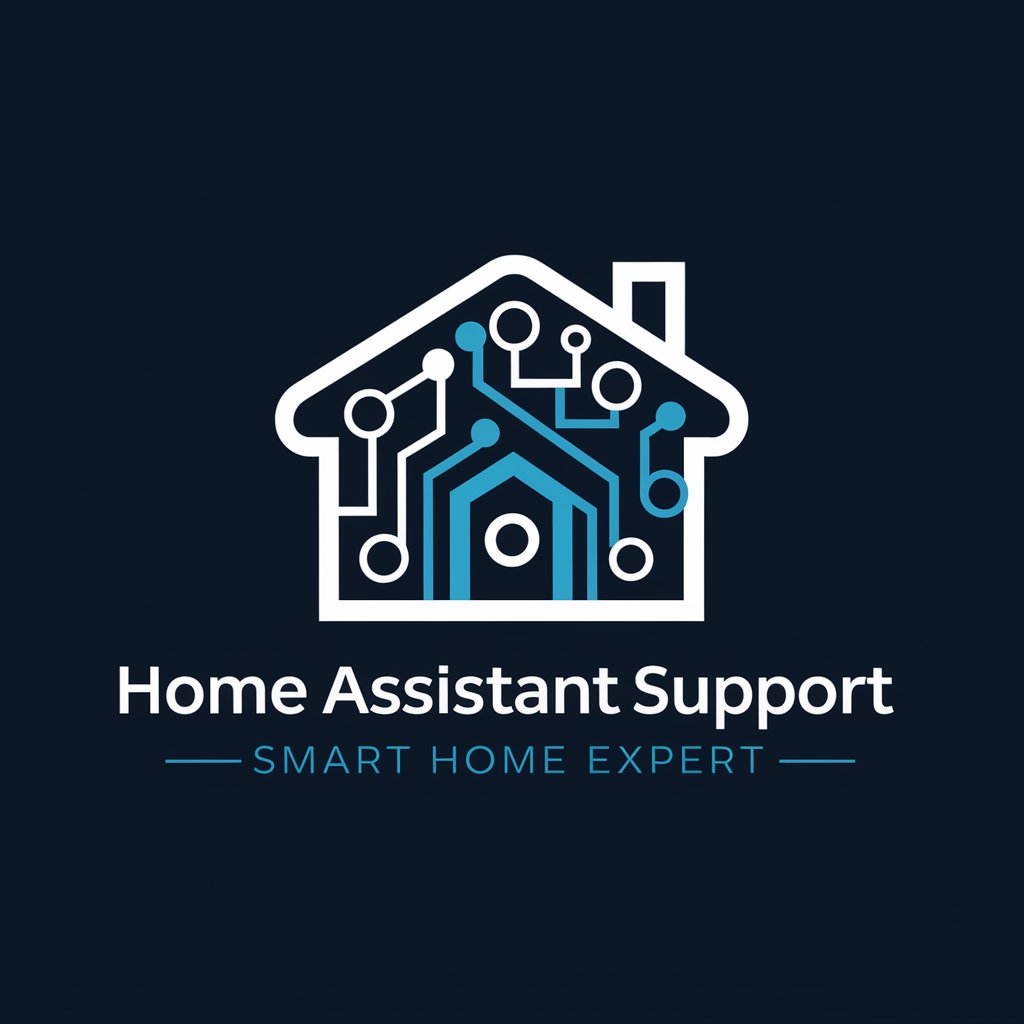
Home Assistant - smart home automation platform

Your personal advanced Smart Home assistant. Trained with the latest knowledge about Home Assistant, ESPHome, MQTT, YAML, Jinja2, Zigbee, Node-RED, Alexa, Raspberry, Arduino, and more.
AI-powered automation for smarter homes
💡 Help me set up smart lighting in bedroom
📱 Build a custom dashboard for smart devices
🛏️ Automate routines for morning and bedtime
🧠 Teach me some useful skill or trick in Home Assistant
Get Embed Code
Introduction to Home Assistant
Home Assistant is an open-source platform designed for home automation that allows users to control and monitor a wide variety of smart home devices in one unified interface. Built with the aim of creating a privacy-focused solution, Home Assistant operates primarily on local servers, reducing reliance on cloud services, which makes it secure and responsive. It is highly customizable, supporting thousands of integrations with devices, services, and protocols. The system is built using Python and YAML, offering flexibility for tech-savvy users to create custom automations and user interfaces. Home Assistant enables you to connect devices like smart lights, thermostats, security cameras, and speakers, and automate their interactions based on various conditions such as time, location, or sensor input. For example, you could set up a scenario where all lights in your house turn off automatically when you leave or a notification is sent when a security camera detects motion. Powered by ChatGPT-4o。

Main Functions of Home Assistant
Device Integration
Example
Home Assistant integrates with Philips Hue, Google Nest, Sonos, and over 1,900 other smart devices.
Scenario
A user can control smart bulbs, thermostats, and speakers from different manufacturers through one dashboard. For instance, turning off all lights in the house with a single command, even if they're from different brands.
Automation
Example
Automations can be configured to turn on lights when a user arrives home, based on GPS location tracking from the user's smartphone.
Scenario
When a user’s phone enters a designated 'home' zone, the system can turn on the entry lights and adjust the thermostat to a comfortable temperature.
Energy Management
Example
Home Assistant monitors energy usage with smart plugs or integrations with energy meters.
Scenario
The system tracks and displays real-time energy consumption, enabling a user to identify high-energy appliances and optimize usage. It can turn off non-essential devices when energy rates are high.
Voice Control
Example
Home Assistant integrates with Google Assistant or Amazon Alexa, allowing voice commands to trigger actions.
Scenario
A user can say 'Goodnight' to Alexa, and Home Assistant will turn off the lights, lock the doors, and lower the thermostat.
Custom Dashboards
Example
Home Assistant allows users to create personalized dashboards using Lovelace UI, tailored to their preferences and needs.
Scenario
A family could set up separate dashboards for each member, showing relevant information like personalized room temperatures, security camera feeds, and calendar events.
Notifications and Alerts
Example
Home Assistant sends mobile or email notifications when an event happens, such as a door opening or a smoke alarm triggering.
Scenario
When a smoke detector is triggered, Home Assistant can send a push notification to your phone and sound an alarm on all connected speakers in the house.
Ideal Users of Home Assistant
Tech Enthusiasts and DIY Hobbyists
Home Assistant is highly appealing to tech enthusiasts who enjoy tinkering and customizing their home automation setups. These users benefit from its flexibility, extensive integrations, and local control, allowing them to create advanced automations and personalized setups.
Privacy-Conscious Users
Users concerned about privacy and data security benefit from Home Assistant's ability to run entirely on local servers without relying on the cloud. It ensures that sensitive data remains private and within the user's home network.
Energy Efficiency Advocates
People focused on reducing their energy consumption and lowering their bills are ideal users. Home Assistant’s energy monitoring and automation functions allow them to track their energy use and set up smart automations to optimize consumption.
Smart Home Beginners
Home Assistant can also cater to smart home beginners, especially with its growing ecosystem of easy-to-use integrations and community support. While it may have a learning curve, users who want a unified platform to control all devices benefit from starting with Home Assistant.
Homeowners with Security Focus
Homeowners looking to improve security through smart devices find Home Assistant useful for managing and automating security cameras, door locks, motion sensors, and alerts. They can benefit from real-time notifications, remote control, and automated security routines.

How to Use Home Assistant
1
Visit yeschat.ai for a free trial without login, also no need for ChatGPT Plus.
2
Set up Home Assistant by downloading the official software from the home-assistant.io website and installing it on a dedicated server or device (like a Raspberry Pi, or virtual machine). Ensure that the device has network connectivity.
3
Configure the devices and services you want to control (lights, sensors, cameras, etc.). Use integrations to connect smart devices like Zigbee, Z-Wave, or popular brands (e.g., Philips Hue, Google Nest).
4
Create automations using the Home Assistant's YAML-based configuration or the user-friendly visual interface. Automations could include actions like turning on lights when you enter a room or sending alerts when a sensor is triggered.
5
Monitor your devices and automations through Home Assistant's dashboard, which can be customized to show the most important data and control points for your smart home.
Try other advanced and practical GPTs
Coupert
AI-powered savings for online shoppers

Lecture Study Notes
AI-powered notes for deep understanding.

爆款标题 | 标题 | 名称 | 主题 | 百家号 | 公众号 | 头条
AI-powered catchy headlines for any platform

ㆍArduino Expertㆍ
AI-powered expert assistance for Arduino projects

Power BI Copilot
AI-powered assistant for Power BI solutions.

Redis Expert
AI-powered Redis optimization assistant

Video Idea Generator
AI-powered tool for viral video ideas

Solidity
AI-powered smart contract development.

Marketing RRSS - Magenta Consultores
AI-powered marketing for small businesses

レスバ最強おじさんRONPAさん
AI-powered debate warrior simulation

LetzAI
AI-powered image creation made simple
Nuxt
AI-Powered Web Development Simplified

Frequently Asked Questions about Home Assistant
What is Home Assistant?
Home Assistant is an open-source platform designed to help you control your smart home devices and create automations to simplify daily routines. It supports a wide range of devices and integrates with various services.
Can Home Assistant be used without coding skills?
Yes, Home Assistant offers a visual interface for setting up automations and configuring devices, though more advanced customizations can be made using YAML. Basic usage does not require programming knowledge.
Which devices are compatible with Home Assistant?
Home Assistant supports thousands of devices across different brands and protocols, including Zigbee, Z-Wave, Wi-Fi-based devices, and more. Popular integrations include Philips Hue, Sonos, Google Nest, and many others.
How secure is Home Assistant?
Home Assistant prioritizes local control, meaning your data remains within your network, improving security and privacy. However, you can enable remote access using a secure connection with proper configuration.
What are some typical use cases for Home Assistant?
Common use cases include controlling smart lights, setting up motion sensors to trigger alarms, automating temperature control with thermostats, and integrating voice assistants like Alexa and Google Assistant for voice commands.





